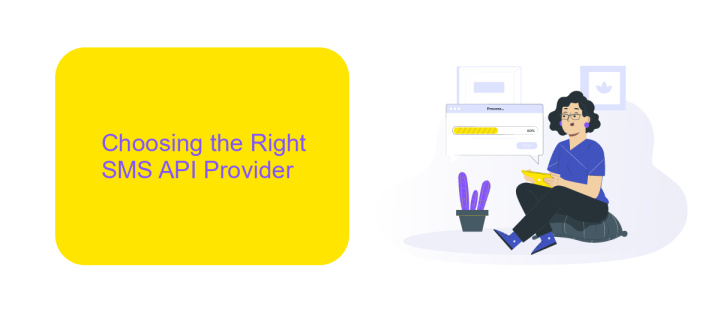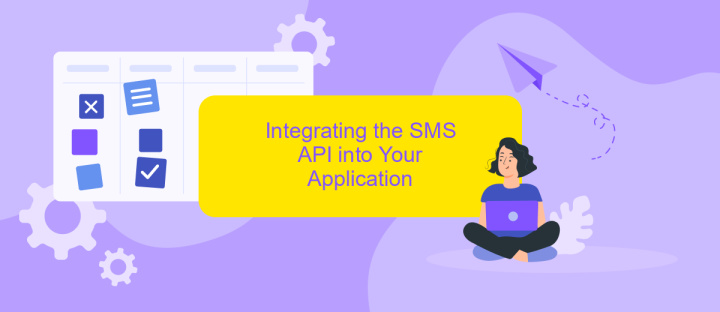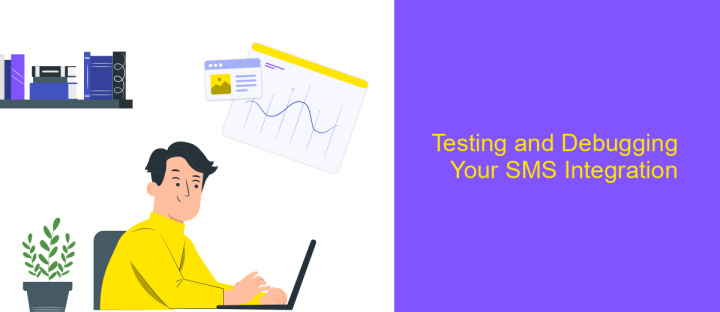SMS API Integration
In today's fast-paced digital landscape, seamless communication is crucial for businesses striving to maintain a competitive edge. SMS API integration offers a powerful solution, enabling companies to send and receive text messages effortlessly through their existing systems. By automating messaging processes, businesses can enhance customer engagement, streamline operations, and improve overall efficiency. Discover how integrating SMS APIs can transform your communication strategy and drive success in an increasingly connected world.
Understanding SMS API Basics
SMS API integration is a powerful tool that allows applications to send and receive SMS messages seamlessly. By leveraging this technology, businesses can enhance communication with customers, automate notifications, and streamline operations. Understanding the basics of SMS APIs is crucial for developers looking to incorporate messaging capabilities into their applications.
- API Key: A unique identifier used to authenticate requests to the SMS service.
- Endpoint URL: The URL where API requests are sent to interact with the SMS service.
- HTTP Methods: Common methods like GET, POST, PUT, and DELETE used to perform actions.
- Response Codes: Standard HTTP codes indicating the success or failure of an API request.
- Rate Limiting: Restrictions on the number of API requests allowed within a certain timeframe.
By mastering these fundamental concepts, developers can effectively utilize SMS APIs to enhance their applications' functionality. Whether for sending promotional messages or critical alerts, SMS API integration provides a reliable and efficient way to reach users. As the demand for instant communication grows, understanding and implementing SMS APIs becomes increasingly important for staying competitive in today's digital landscape.
Choosing the Right SMS API Provider

When selecting an SMS API provider, it's crucial to evaluate key factors such as reliability, scalability, and ease of integration. A dependable provider ensures that your messages are delivered promptly and securely, maintaining high uptime and robust infrastructure. Scalability is equally important, as your business may grow, and your SMS needs could increase. Ensure that the provider can handle larger volumes of messages without compromising on performance.
Ease of integration is another vital consideration. Look for a provider that offers comprehensive documentation and support to facilitate a smooth setup process. Services like ApiX-Drive can be beneficial in this regard, as they provide seamless integration solutions for various platforms, simplifying the process for businesses. Additionally, consider the cost structure and available features such as analytics, delivery reports, and customer support, to ensure that the provider aligns with your business objectives and budget. By carefully assessing these aspects, you can choose an SMS API provider that effectively meets your communication needs.
Integrating the SMS API into Your Application

Integrating an SMS API into your application can significantly enhance communication capabilities by enabling automated messaging. To begin, ensure you have selected a reliable SMS API provider that suits your needs. Gather the necessary API credentials, such as API key and secret, from your provider's dashboard. These credentials will be essential for authenticating your application with the SMS service.
- Set up your development environment by installing any required libraries or SDKs provided by the SMS API provider.
- Configure your application to use the API credentials for authentication.
- Implement the API endpoints to send, receive, and manage messages. This may involve creating functions or classes to handle API requests.
- Test the integration thoroughly to ensure messages are sent and received correctly.
- Monitor the API usage and handle any errors or exceptions that may arise during communication.
Once the integration is complete, your application will be capable of sending and receiving SMS messages efficiently. This functionality can be leveraged for various purposes, such as user notifications, two-factor authentication, or marketing campaigns. Ensure to comply with relevant regulations and obtain user consent where necessary.
Testing and Debugging Your SMS Integration

Testing and debugging your SMS integration is a crucial step to ensure seamless communication. Start by verifying the basic functionality of your SMS API. Send test messages to confirm that the API can successfully deliver messages to intended recipients. This initial testing helps identify any major issues early in the integration process.
Next, simulate different scenarios to evaluate how the API handles various conditions. Test for message delivery under different network conditions and simulate high traffic to ensure the system can manage peak loads. This will help identify potential bottlenecks and performance issues.
- Check for error handling and response codes to ensure proper error management.
- Validate message formatting and character encoding to prevent data corruption.
- Conduct security testing to protect against unauthorized access and data breaches.
Finally, employ logging and monitoring tools to track message flow and identify issues in real-time. Regularly review logs to detect patterns that could indicate underlying problems. By thoroughly testing and debugging your SMS integration, you can ensure reliable and efficient communication with your users.
Best Practices and Security Considerations
When integrating an SMS API, it is crucial to follow best practices to ensure efficient and secure communication. Start by thoroughly understanding the API documentation and capabilities. This helps in avoiding common pitfalls and ensures a smooth integration process. Utilize sandbox environments to test your integration before going live, allowing you to identify and fix potential issues without impacting users. Additionally, consider using a service like ApiX-Drive, which simplifies the integration process by providing intuitive tools and support for connecting various applications seamlessly.
Security is paramount when dealing with SMS APIs. Always use HTTPS to encrypt data in transit and protect sensitive information. Implement proper authentication methods, such as API keys or OAuth, to ensure only authorized users can access your API. Regularly update your software to patch vulnerabilities and conduct security audits to identify potential risks. By following these best practices and security considerations, you can maintain a robust and secure SMS API integration that enhances communication while safeguarding user data.
FAQ
What is an SMS API and how does it work?
How can I integrate SMS functionality into my application?
What are the benefits of using an SMS API?
How do I ensure my SMS messages are delivered reliably?
Can I customize the sender ID when sending SMS messages via an API?
Strive to take your business to the next level, achieve your goals faster and more efficiently? Apix-Drive is your reliable assistant for these tasks. An online service and application connector will help you automate key business processes and get rid of the routine. You and your employees will free up time for important core tasks. Try Apix-Drive features for free to see the effectiveness of the online connector for yourself.

